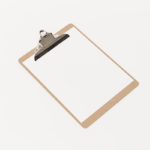Mateo Mate has developed since the beginning of his career a work with a noticeable and critical sense of humor. His installations and works deal with the meaning of patriotism, nationalism and domestic issues.
Through the transformation of the different objects we find in the household sphere in politic objects of nationalistic exaltation, blurring the boundaries between the public and the private and satirizing about the great truths., Mateo Mate insists in the kind of militarization of the domestic issues and the everyday reality we suffer, not only at home but also in cultural surroundings like the museum or the contemporary art center. With different connotations related with boundaries, the power structures, hidden but current in every gesture and through irony, Mateo Mate develops a work in which fun is never a sign of banality but the adequate way to denounce the political system.
Military camouflage would not exist without the discovery by the impressionism that stripped down all the natural elements in a landscape to their basic shapes, and reinterpreted them as colors just as the human retina perceives them at a first glance. A few years after, the uniforms of the armies throughout the world radically changed their idea; they went from being a representative element of the power to being offensive weapons, although passive ones. The plastic language of the impressionists had been turned into a weapon. During the Second World War all the Western powers had specific departments for developing camouflage. Jean-Louis Forain, Jacques Villon, Thomas Hart Benton, John Singer Sargent, Oskar Schlemmer, Franz Marc, Laszlo Moholy-Nagy, Arshile Gorky, and Ellsworth Kelly, were some of the artists who handed over their visual codes
Through an act of justice, attempting to return to art what war has stolen from it, Mateo Mate shows how the concept of camouflage has seeped into virtually all the human social activities
The fact that 19th Century painting can be transformed in fragments of military uniforms not only tells us much about the quality of the painting, but also warns us about the imposition of an standard and militarized way of looking and being in the world. The crossing through these Paisajes Uniformados offers us a reflection about the nature of painting as well as a clear analysis and a reaction against all those camouflage techniques that form the “hidden agenda” of society. MATEO MATE, 1964 Madrid, exhibits in galleries of Madrid, Barcelona, Wien, Chile… He has had individual shows at the Museo Nacional Centro de Arte Reina Sofia, Sala Siqueiros, México DF, Herlizya Museum, Israel, Patio Herreriano, Valladolid, Matadero, Madrid, the National Library, Museo Cerralbo and Lazaro Galdiano, Madrid, among others. He has participated in groups shows at the Jeu de Pomme, Paris, PS1 Moma New York, the Marcelino Botín Foundation, Museo Berardo in Lisbon, Cento de Arte 2 de Mayo in Madrid, the Joan Miro Foundation, Mart in Trento, Tapies Foundation, Smithsonian in Washington, or the Contemporary Museum of Santiago in Chile.






















